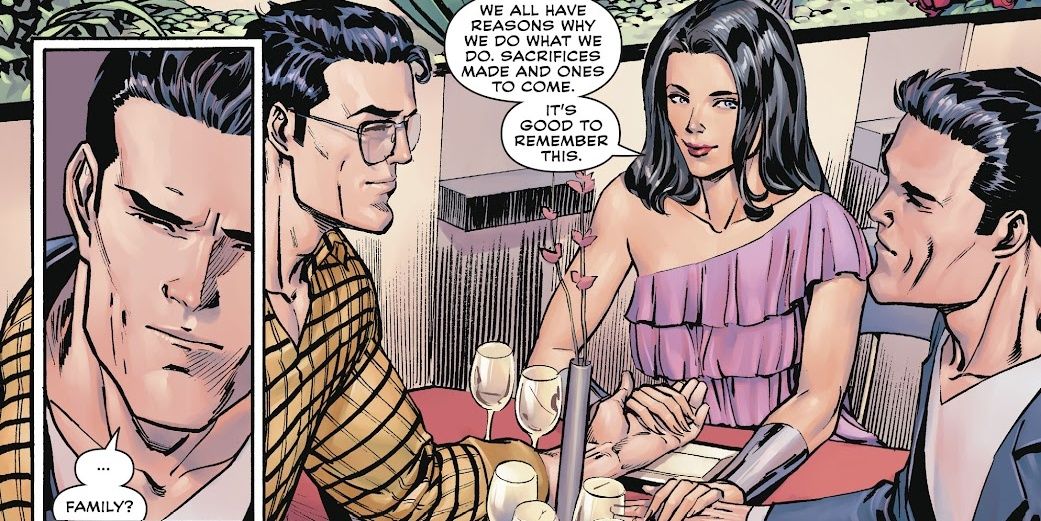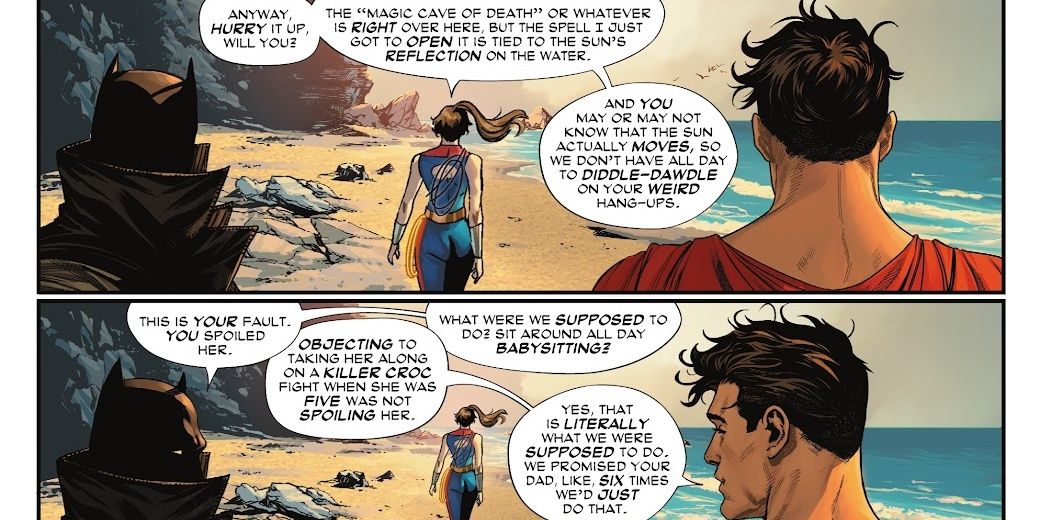The following contains spoilers for Wonder Woman #800, on sale now from DC Comics.
Wonder Woman #800’s “Trinity” (by Tom King, Daniel Sampere, Tomeu Morey, and Clayton Cowles) serves as a prelude to the title’s Dawn of DC renumbering and accompanying new direction. But whereas the rest of the anthology is a celebration of its titular hero and those she has inspired in the past, “Trinity” sets its scene roughly twenty years in the future.
With the introduction of Diana’s daughter Elizabeth Marston Prince (so named for Wonder Woman co-creator Elizabeth Holloway Marston) comes a significant contribution to DC’s most canonically depicted future timeline. Elizabeth’s presence rounds off the “super sons” as her own hero, Trinity. In doing so, she isn’t just another crime fighter, but the final piece needed to bring the future "world’s finest" into the full breadth of their parents’ legacy as DC’s new trinity even though the dynamic between the heroes has changed.
The Original Trinity Represented a Merging of Worlds
The first encounter between the original trinity occurred in All-Star Comics #36 (by Gardner Fox, Gaspar Saladino, Harry Lampert, Irwin Hasen, Julius Schwartz, Robert Kanigher, and Sheldon Mayer). This was a fairly standard affair with neither the need nor the audience to dig too deeply into the philosophical implications of such a union. However, as has since been illustrated across the decades, Batman, Superman, and Wonder Woman’s partnership is a crossing of entire worlds. Each one is a cultural ambassador personifying human ingenuity, otherworldly aspirations, and mythical wonder.
As the formidable heroic paragons of their universe, each member of the trinity has taken up a role of leadership for most of their superhero tenure. And so, when the three come together, it is as individuals who respect each other but respectively have a lifetime of unique self-affirming experiences to draw upon. As colleagues, there has also been wiggle room for writers to explore intimate interpersonal relations such as Bruce and Diana’s close brushes with romance across the comics and cartoons or Diana and Clark’s more explicitly cemented relationships.
Dawn of DC's New Trinity Embodies Legacy
Elizabeth’s place alongside Jon Kent and Damian Wayne, however, is as a younger sister, fighting beside two older brothers who once watched over her. As much as the original trinity fought together, it would be slightly off base to call them family. Conversely, Damian, Jon, and Elizabeth’s collective claim to the mantle would not represent cross-cultural unification. Instead, it has the honor and challenge of exemplifying what it looks like to come up through the generations as the embodiment of the best values the superhero community can inspire.
Plucky attitude aside, very little is known about Elizabeth beyond her having proven herself enough to warrant a place in the future Justice League. It can also be assumed that her training is not just Amazonian, but derived from Batman and Superman as well. As is the nature of such time jumps in any story, the mysteries of the character and how she might further differ from her mother are sure to be soon revealed. Meanwhile, it’s exciting to imagine and look forward to the sort of tales that could have unfolded had Bruce, Clark, and Diana grown up eating at the same table.



